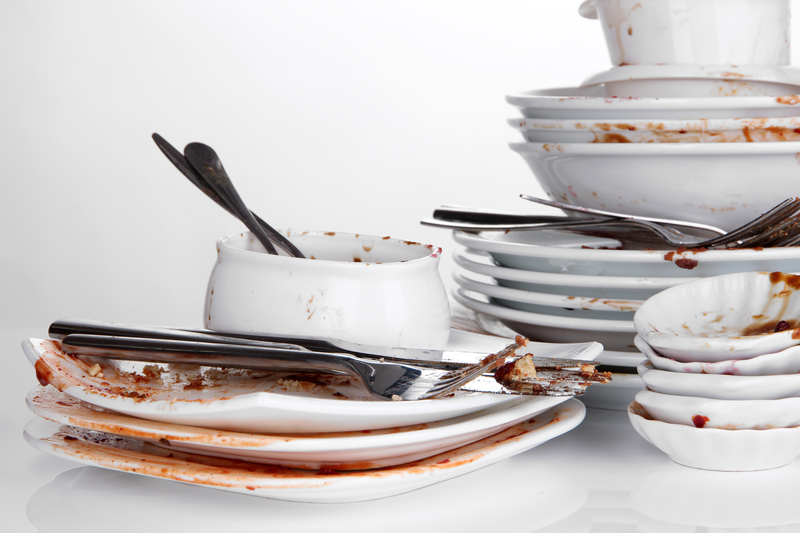Revitalize Your Jewelry with Innovative Cleaning Tips
Posted on 02/09/2025
Revitalize Your Jewelry with Innovative Cleaning Tips
Jewelry isn't just an accessory--it's a personal statement, a symbol of cherished memories, and often, a valuable investment. Over time, however, even the most treasured pieces can lose their sparkle and elegance. If your rings, necklaces, or bracelets have dulled, don't despair. With the right techniques, you can effortlessly revitalize your jewelry and restore its luster. In this comprehensive guide, we'll share expert-approved and innovative jewelry cleaning tips to help you keep your precious items gleaming for years to come.
Why Cleaning Your Jewelry Matters
- Maintains Beauty: Proper care keeps your pieces looking as brilliant as the day you bought them.
- Protects Value: Regular maintenance can preserve both sentimental and financial worth.
- Prevents Damage: Dirt, oils, and chemicals can degrade jewelry, making cleaning vital for longevity.
- Hygiene: Daily wear can cause a build-up of bacteria, which makes regular cleaning an important health practice.

Understanding Jewelry Materials and Their Unique Needs
Every material--be it gold, silver, platinum, gemstones, or pearls--requires a different cleaning approach. Understanding these unique needs ensures you protect your jewelry while bringing back its shine.
Gold Jewelry
Gold is durable yet prone to surface scratching. Chemical cleaners can be harsh, so gentle cleaning is recommended.
Silver Jewelry
Silver tarnishes easily but regains its luster with the right methods. Special steps may be required to address heavy tarnish.
Gemstones
Some stones--like diamonds--can be cleaned vigorously, while softer stones (opal, turquoise) need extra care.
Pearls
Pearls are delicate and require non-abrasive, pH-neutral solutions to prevent surface damage.
Basic At-Home Jewelry Cleaning Methods
For most jewelry, daily maintenance and regular, safe cleaning methods suffice. Here's how you can restore shine at home:
1. Soap and Water Solution
- Best for: Gold, platinum, and gemstone jewelry.
- Fill a bowl with lukewarm water and add a few drops of mild dish soap.
- Soak your jewelry for 10-15 minutes.
- Use a soft toothbrush to gently scrub crevices.
- Rinse thoroughly and dry with a lint-free cloth.
2. Baking Soda Paste for Silver
- Best for: Heavily tarnished sterling silver.
- Make a paste with three parts baking soda and one part water.
- Apply gently with a cloth or brush and work into the crevices.
- Rinse thoroughly and pat dry.
3. Alka-Seltzer Soak
- Best for: Diamond and gemstone rings.
- Drop jewelry into a glass of fizzing Alka-Seltzer for a few minutes.
- Rinse and dry. The bubbles help lift dirt and grime.
4. Witch Hazel and Tea Tree Oil Mix
- Best for: Silver and costume jewelry (not pearls or porous stones).
- Combine half a cup of witch hazel with a few drops of tea tree oil.
- Soak items for a few minutes, then scrub with a soft brush.
- Rinse and dry.
5. Toothpaste Hack
- Use: Only for durable metals like silver--avoid soft gemstones.
- Apply non-gel toothpaste with a soft brush.
- Rinse well and dry with a soft cloth.
Innovative Jewelry Cleaning Techniques
While classic methods work wonders, technology and creativity have ushered in new ways to revitalize your treasured pieces more efficiently and safely.
1. Ultrasonic Cleaners
- These devices use high-frequency sound waves to dislodge dirt.
- Fill the tank with water and an approved cleaning solution, then submerge your jewelry.
- Ideal for: Diamonds, gold, platinum, and some hard gemstones.
- Warning: Avoid using on pearls, opals, and vintage/antique pieces as vibrations can cause damage.
2. Steam Cleaning at Home
- Some handheld steamers are designed for jewelry. The steam lifts grime without harsh chemicals.
- Always check manufacturer recommendations for your specific pieces before trying this method.
3. DIY Aluminum Foil and Baking Soda Bath
- Line a bowl with aluminum foil, shiny side up.
- Add hot water, one tablespoon of baking soda, and a dash of salt.
- Place tarnished silver jewelry in the solution, ensuring it touches the foil.
- Chemistry at work! The electrolyte reaction helps transfer tarnish from the jewelry to the foil, restoring its shine.
Care Tips for Unique and Vintage Jewelry
Family heirlooms and antique jewelry deserve extra attention. Here's how to safely clean and protect them:
- Consult a Professional: For irreplaceable items, seek expert advice to avoid damaging delicate settings or materials.
- Avoid Water Immersion: Vintage adhesives and settings may weaken when soaked.
- Use Soft Brushes and Dry Cleaning Cloths: Remove dirt gently without moisture.
- Store Properly: After cleaning, keep vintage pieces in soft pouches away from sunlight.
Pro Tips to Prevent Jewelry Tarnish and Wear
- Store in Airtight Containers: Exposure to air hastens tarnish. Use jewelry boxes or ziplock bags with anti-tarnish strips.
- Keep Pieces Separated: To avoid metal and stone scratching, store each piece individually.
- Remove Before Activities: Take off jewelry when swimming, exercising, or cleaning to avoid harsh chemicals and impacts.
- Apply Products First: Perfumes, lotions, and hairsprays can damage finishes. Always put on jewelry last.
- Schedule Regular Cleanings: Mark your calendar to clean your jewelry every few weeks for ongoing brilliance.
Myths About Jewelry Cleaning--Busted!
- Lemon Juice is Safe for All: Myth! Acidic solutions can etch gemstones and damage metal alloys.
- Toothpaste is a Universal Cleaner: Myth! It can be too abrasive for soft metals and stones.
- Vinegar Cleans Everything: Myth! Vinegar may tarnish finishes and dissolve adhesives. Use with caution.
Professional Jewelry Cleaning: When to Seek Expert Help
Some situations call for professional expertise to revitalize your jewelry without risk:
- Loss of Structural Integrity: If you notice loose stones or broken prongs, consult a jeweler immediately.
- Deep Tarnish: Severe tarnishing often requires specialized tools and knowledge.
- Warranty Maintenance: Professional cleaning may be part of your jewelry's warranty policy.
- Appraisals and Restorations: Professional cleanings can enhance appraisals and maintain authenticity for heirloom pieces.
Must-Have Jewelry Cleaning Tools
- Jewelry Polishing Cloth: A soft microfiber or chamois cloth to buff and shine.
- Soft Bristled Toothbrush: For scrubbing small crevices.
- Ultrasonic Cleaner: For restoring the brilliance of hard stones and metals.
- Natural Cleaning Solutions: Mild dish soap, baking soda, witch hazel, and more.
Going Green: Eco-Friendly Jewelry Cleaning Ideas
Caring for your jewelry shouldn't mean harming the planet. Revitalize your jewelry the eco-friendly way with these solutions:
- Use Plant-Based Soaps: They're gentle on both jewelry and the environment.
- Opt for Reusable Cloths: Replace disposable wipes with washable microfiber towels.
- DIY Cleaners: Baking soda, white vinegar (on non-porous stones and metals only), and lemon juice (for silver only--avoid pearls and soft stones).
How to Maintain Your Jewelry's Shine
Regular attention is the secret to keeping all your favorite pieces
- Wipe After Each Wear: Quickly wiping off sweat, oils, and makeup will prevent long-term buildup.
- Run Monthly Deep Cleans: Use one of the innovative techniques above based on the jewelry material.
- Inspect Frequently: Check for weak clasps, loose stones, or damaged prongs to avoid loss or breakage.
Jewelry Cleaning Mistakes to Avoid
- Skipping Manufacturer Guidelines: Always follow the care instructions your jeweler provides.
- Using Harsh Brushes: Use only the softest brushes to avoid mechanical damage.
- Mixing Jewelry Types: Metals and stones have varying tolerances--clean separately for best results.
- Drying With Paper Towels: They can scratch delicate surfaces. Opt for soft, lint-free cloths instead.

Frequently Asked Questions (FAQs)
How often should I clean my jewelry?
For everyday pieces, a gentle wipe after each wear and a thorough clean every few weeks is optimal. For special occasion pieces, clean after each use before storage.
Is it safe to use vinegar or baking soda on all jewelry?
Not always. Baking soda is safe for most metals, but avoid it on soft stones or pearls. Vinegar can etch stones and damage adhesives, so use with caution and do a patch test.
Can I use ultrasonic cleaners on all my jewelry?
No. Avoid using them on pearls, opals, emeralds, and antique pieces as the vibrations can damage structural elements.
What is the best method to clean diamonds?
A combination of dish soap and warm water with a soft brush delivers the best results. For professional sparkle, consider a jeweler's steam or ultrasonic cleaning.
Conclusion: Bring New Life to Your Jewelry Collection
Your jewelry deserves care that's as unique as each piece. By applying these innovative jewelry cleaning tips, you'll not only revitalize your jewelry but also safeguard your precious investments for generations. Whether it's a sparkling engagement ring or a treasured family heirloom, regular maintenance and a blend of time-tested and state-of-the-art techniques ensure that every piece you wear gleams as brightly as your memories.
Ready to rejuvenate your jewelry box? Start today and let your collection shine!




